Meaningful Art
At Inspirations Nurseries all of our rooms have a focus on creativity, and our Pre-School room have access to our Reggio Emilia Inspired Art Studio, where the children and the Atelierista follow interests to develop and learn through all forms of expressive art. But what should children’s art look like? And what makes meaningful art?
I remember as a child being given a template to colour in at school, which is a lovely pastime, but looking back now it feels so hollow. Sure we were given the freedom to choose whatever colour we wanted, and the challenge of trying to stay within the lines, but are there any meaningful moments created here? I used to spend my weekends creating dolls houses from cereal boxes, recording my own radio shows and even creating sculptures from the babybell cheese wax. It was in these moments of creating something out of nothing where meaningful moment were made.

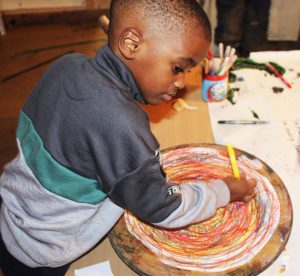
Children express themselves in so many ways, we call this the 100 languages of learning. When it comes to children’s creativity, the adult can sometimes get in the way of the children’s full potential, and sometimes the fear of ‘mess’ is a huge barrier at home. This is why the Art Studio is that place for children to create using their whole bodies, their senses, their hands and their voices.
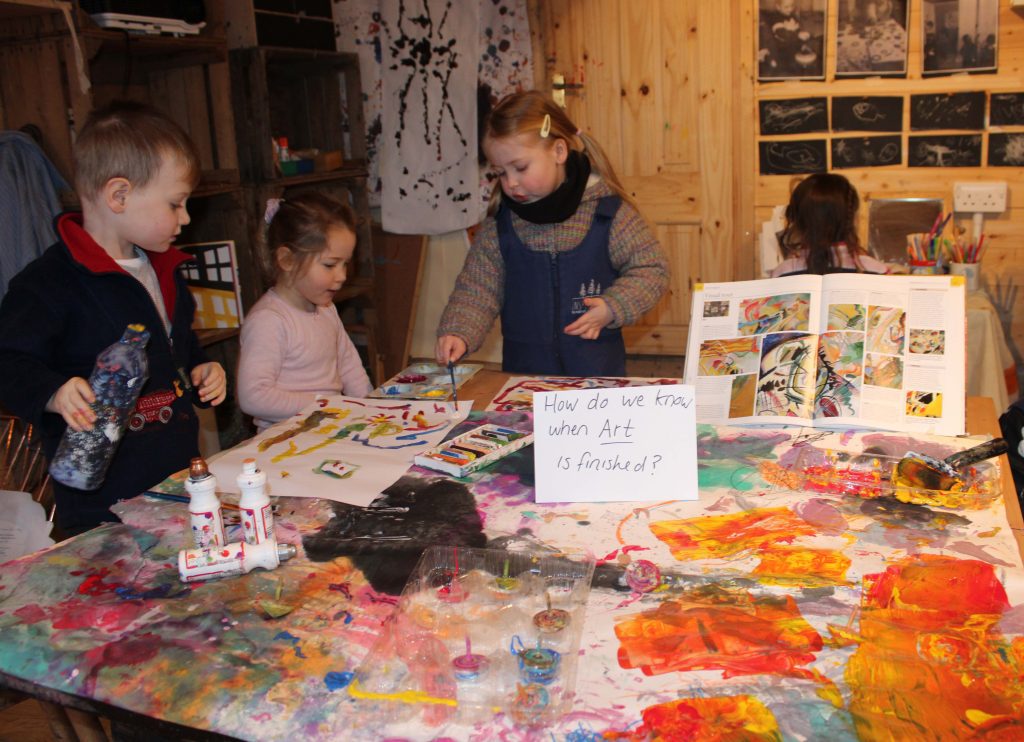
What makes meaningful Art?
Well, to put it simply, meaningful art happens when the child is fully immersed in the process. We pin too much expectation on what children’s art should look like, and put too much focus on a finished product to bring home and stick on our fridge. If we remove that preconceived idea of what a child’s creation should look like, then the barriers come down and imagination is unlocked and learning really starts to happen. Art, much like learning is a process, a chance for them to test ideas out, experiment with colour, embrace mistakes, learn the properties of materials, and sure, none of this can happen without mess!
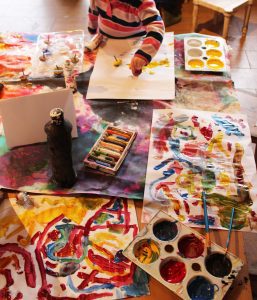
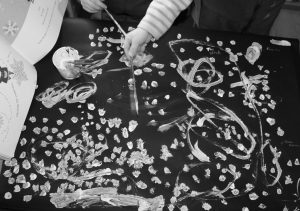
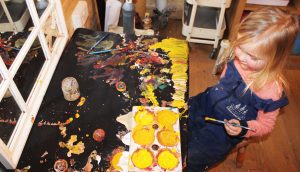
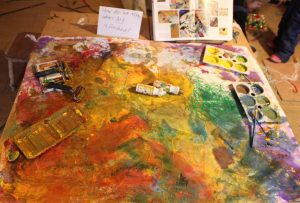
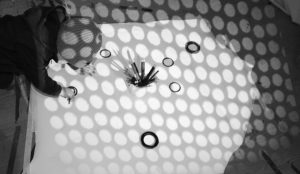
Removing our preconceived ideas of the process or end result doesn’t mean the activity is without intent. At Inspirations our activities are open ended, but there’s always intent behind it. When setting up any activity, as the educators we ask our selves ‘what do we intend them to learn?’ and ‘how will we implement this?’
Art is not about conforming, the very essence of art is to be free and explore. You may have noticed at Inspirations we don’t send children home at christmas with crafts, we don’t line our children up in a production line to make valentines cards with a template thought up by an adult. This is because we always put our children at the centre of their own learning, it is their ideas that are to be tried and tested, their mistakes that are learnt from, and their experiments that are creating the blueprint to their future brain connections. When we provide the space, the time and the materials and follow their lead the results are magical, and the process leaves a lasting impression.
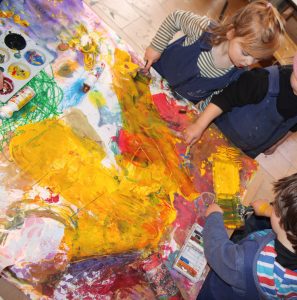
-Nathalie